Uphill Battle: Who Needs To Step Up For St. Louis Blues To Win

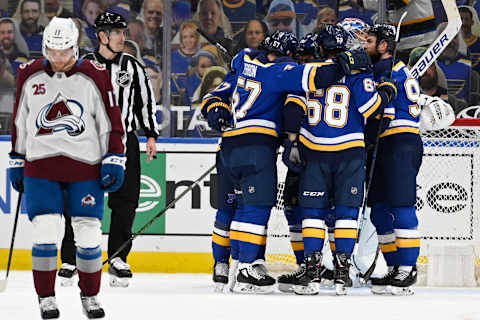
The first round matchups are set and the St. Louis Blues, however unlikely, have managed to squeak into the postseason for another go at the Stanley Cup. Of course, this was never going to be easy.
The Blues, who are notorious for keeping their fans on their toes, overcame a lackluster-at-best start to the season to put together a slightly-better-than-lackluster second half. They managed to just barely hold the last playoff spot, while the rest of the division crumbled beneath them.
Consider it a blessing. Considering this is a team one (and a half?) season removed from a Stanley Cup Championship, if they got bounced early in the play-in round in last year’s modified playoff format and then completely missed the postseason the next year, it would be borderline unacceptable.
Granted, we’ve seen one-hit wonders in this league before. We will undoubtedly see them again, but the messaging we’ve gotten from this team – from ownership all the way down – has suggested that this team’s success is expected to be long-term. A missed playoff – yes, even one – could force management’s hand at a whim.
So, making playoffs = great news, right?
WRONG. So says every fan, pundit and algorithm that’s ever existed in the history of hockey.
I’m sure I don’t need to be the one to tell you. If you read around the league, you’re bound to have seen numerous headlines shouting some variation of “THIS IS THE MOST LOPSIDED MATCHUP IN THE PLAYOFFS EVER” and advising to refinance your home and place your entire life savings on Colorado winning in 4.
If I’m being honest, I’m not even upset about it, nor do I necessarily disagree. The numbers don’t lie: Colorado is an ELITE team. Not elite like “very good”, elite like “the absolute favorite to win the Stanley Cup this year.” The Blues almost lost the final playoff spot to the Arizona Coyotes; so, you see where everyone’s coming from.
But, in true hockey fashion, this is not always what it seems. The Columbus Blue Jackets heard similar sentiments when they were about to face off with Nikita Kucherov and the record-breaking Tampa Bay Lightning in the 2019 Playoffs (yeah, those ones).
The Blue Jackets responded by sweeping the juggernauts in that series. If the NHL has taught us anything, it’s that the best team doesn’t always win. That’s not just game-to-game, but holds true for a series as well. Sometimes, there are intangibles at play that can overcome a chasm in numbers, and we just have to be okay with that.
Sometimes, if there’s a will, there’s a way. Depending on the day, we know the Blues have the will.
But how can they do it?
Let’s break down some of the impact players on the team and outline exactly what will be needed to take down a super-powered Avalanche team.
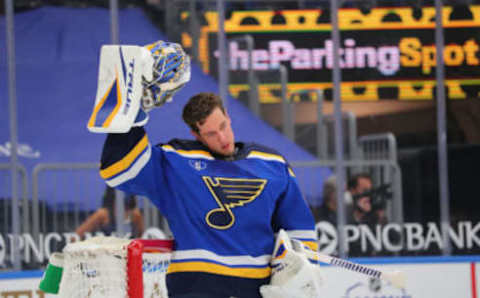
JORDAN BINNINGTON
Obviously, any team’s most important player in the postseason is their goaltender. Jordan Binnington was the last line of defense in 2019 and is expected to be the same going into this year’s playoffs.
As the tournament progresses, the war of attrition takes over and it is absolutely essential that Binnington is cool, calm, collected and – perhaps most importantly – confident going into Round 1. While he had a rocky start to the year, Binner has cleaned his game up quite a bit.
He had a strong April and May to give the Blues the chance they needed to make the final push for the playoffs. He’ll need to keep trending in the right direction if the Blues are looking to stand a fighting chance.
JUSTIN FAULK
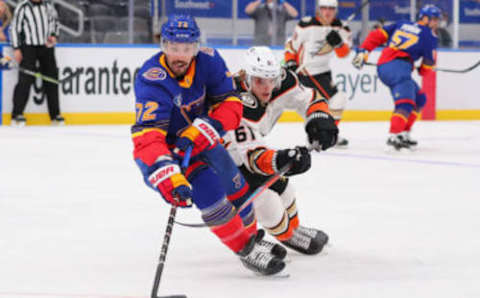
Boy, to be Justin Faulk right now. Last season, the man was thrust into a position where he was doomed to fail in a year where his predecessor was destined to flee.
He took flack from everyone in every zip code from here to the Sun for not “producing.” Now, one year, and one less Alex Pietrangelo later, seems to me like no one’s all that upset with that seven-year contract at the present moment.
Faulk has looked solid this year, even though he trailed off a bit in the second half. With Colton Parayko, Faulk is now an anchor for this team on the blue line at even strength, and that confidence needs to be there against a high-flying Colorado team.
At just under a half-point per-game, his scoring will be exactly the secondary-offense the Blues will need when they can’t break through. He needs to keep it up.
TOREY KRUG

This is Torey Krug‘s first circuit as a St. Louis Blue and the talk around the league has been that he isn’t scoring near as much as many thought he would. This is fair, except that his 32 points leads the team in points from a defenseman and at .63 PPG, he’s on pace for just over 51 points in an 82-game season.
That would be the third-highest season points total in his career.
At 30 years old, this is exactly what you’d want from Krug as a contributor to the offense from the back end. As this will also be his first postseason in the NHL with a non-Boston team, it is essential that Krug put his aggressive instincts front-and-center from the get-go with a new team and defensive-core around him, and a literal (figurative?) Avalanche constantly in his face.
People wanted goals from him. I’m perfectly happy with those rebounds and tips. Fire away, Torey.
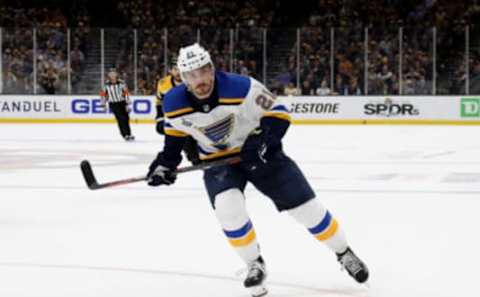
TYLER BOZAK
Why do we build? If we could, we’d ice our top two lines for the entirety of the game. Maybe even the season.
Even better, we’d just fill out the team with an entire roster of superstars. How could one lose?
This is the bane of the NHL’s existence, which is why there’s a salary cap. Even superstars can’t skate and be productive for an entire night, so the salary cap prevents teams from adding too much on-ice value (save for the elusive “team-friendly deal.”)
For this reason, we put the onus on “depth”, especially in the playoffs. It is the objective for any (decent) general manager in the National Hockey League to find as many “bargains” as they can, to make sure they can fill out their roster with players that they can afford, to supplement the players that make the big bucks, but can also contribute on a level that is satisfactory for their standard.
Enter Tyler Bozak.
This guy has done it the right way. Although he’s not necessarily the player he was when he was in his prime in Toronto, he’s taken a new role and understands it well.
I appreciate a player like Bozie for being somewhat of a swiss-army knife – put him in any situation on the ice, tell him what you need from him and don’t look his direction again, but you can trust he’s going to get it done.
A responsible player on both ends of the ice that can, depending on who he’s playing with, set up a pretty play or two when you need it most. You’ve seen it already this season, Centering the 4th, 3rd, 2nd, and even 1st line at times when the team was in desperate need of a shake-up.
Bozak is a trusted asset when you need to shuffle the deck. He will be vital to any success the Blues may have in these playoffs.
VLADIMIR TARASENKO
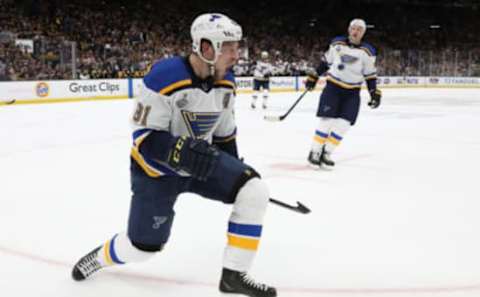
Our guy has been through it recently. Three shoulder surgeries, a couple re-aggravations, in and out of the lineup.
As a matter of fact, he’s injured now and questionable for Game 1. When Vladimir Tarasenko made his long-awaited return this season, Blues fans were quick to jump on him when it took him a little longer to get his feet under him.
He eventually ended up putting the puck in the net, only it wasn’t consistent and it wasn’t often. Tarasenko’s been a game-breaker his whole career; a talent that you can’t justifiably say just goes away.
However, it does seem as though his lethality has taken a dramatic dip in recent years. Here’s the thing: Tank’s got a shot.
Much like bona fide superstar Auston Matthews, many have said Tarasenko’s shot is what makes him to deadly on the ice. The problem is, through shoulder surgeries and months off the ice, he’s having a ton of trouble finding space.
Both with and away from the puck, it’s been extraordinarily difficult for Tarasenko to find open ice. If you can’t get open, good luck firing that puck, regardless of how good your shot is.
To make matters worse, it’s been said that Tarasenko prefers not to work on his right side, taking the one-timer from the short-side. This has been his most effective shot of late, but it’s not his preference.
It’s possible that this also has to do with his shoulder, which is absolutely understandable, but if that option is out the window, Vladdy needs to open up his game and find another way to create chances.
The hockey sense and the skill is there, but if the Blues want to go anywhere in these playoffs, they need one of their best players to be a factor, and a big one. Hopefully the current injury isn’t serious, and he can get back in the lineup and find his game in short order.
ZACH SANFORD
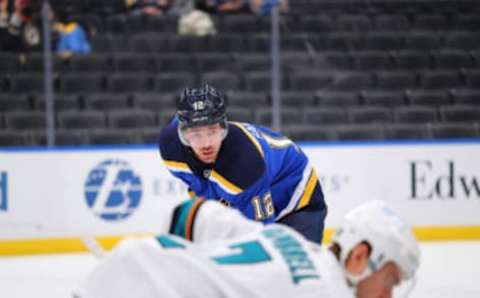
Guys, it’s not happening. I don’t know what’s going on or why it keeps happening, but Zach Sanford is not coming out of this lineup.
Now, look: From what I’m told, his underlying numbers aren’t horrible. But with16 points in 52 games, “not horrible” underlying numbers are not enough to justify handing games away on terrible turnovers at the most inopportune moments.
The Sanford apologists will come out and say that he’s good for a clutch goal or two. I’m not disputing this. I’d say we’re getting into Patrik Berglund territory with this one.
There are glaring – I mean glaring – issues with this player and as soon as we’re getting to the point where everyone’s ready to write him off for good, he goes on a three-game scoring streak and two of them are game-winners. At the end of the day it comes down to whether or not a player is costing you the chance to win, and from my view this year, Sanford is good for more losses than he is wins.
With that being said, he’s not coming out of the lineup. Make of that what you will, but we’ve got to figure out in which scenario this isn’t an absolutely atrocious call by the coaching staff.
Here’s what I’ve come up with: Put the guy on the 3rd line. It’s become abundantly clear that you can augment Sanford’s numbers when you put him with a skilled center (see: O’Reilly in the Cup run) but the wild inconsistency and lack of situational awareness makes him an absolute liability going up against an opponent’s top players.
Keep him on the 3rd line and put Thomas with him as the center. Thomas can make room in the slot, Sanford can crowd the front of the net and they can get some dirty goals.
Keep an option open, say if they’re trailing by a goal or two and desperately need one soon, put him on a shift with O’Reilly on the first line, for one or two shifts MAX, and then it’s right back down the lineup. This team is not in the position this postseason to gamble with the coach’s passion projects. Every single player in this lineup needs to have utility and Sanford has run out of time to make his case.
JADEN SCHWARTZ
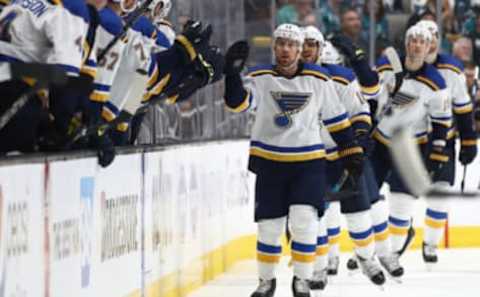
This one’s simple: The self-described streaky scorer needs to score in streaks.
We’re talking from Game One. It’s clear Schwartzy didn’t earn a new contract in the regular season.
So, if playoffs it is, then playoffs it needs to be. He’s coming to the end of his current contract, so if he’s looking to be in a Blues sweater next season, now’s the time.
CRAiG BERUBE
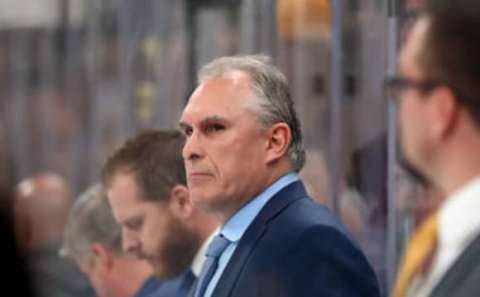
“Chief” Craig Berube brought us a Cup. He turned an abysmal season around. He gained the respect of a professional hockey team, a manager and ownership group, and an entire city of baseball fans. He made history in this city, and with this team.
The type of resolve that gets a team through a four-round gauntlet comes from the players, but resonates through the coach. At some point, though, the question needs to be asked: Does a coach’s system get in the way success?
Since time-immemorial, the Blues organization, as well as the fans, have been dogmatically arrogant about a very arbitrary thing called “Blues Hockey.” No, I’m not talking about the Blues Hockey Club, I’m talking about this imagined prerequisite of Blues hockey ops that prioritizes offense-suffocating, semi-hard-hitting, slow, boring, grinding, hockey.
It’s the kind of thing that renders any skill on the team “secondary.” The kind of thing that makes an A1 offensive defenseman from a focal town in New England get accused of being “average”; an offensive defenseman that came from Raleigh look “bad”; a powerplay specialist from the Florida Panthers look “uninterested.”
The Blues just had its first point-per-game player in EIGHTEEN YEARS. EIGHT. TEEN.
And they expect to outscore Vegas? Colorado? Boston, Washington, Toronto? This does NOT a successful team make. Sure, you’re right, we did win a Cup with this system. But was it truly this system? Or was it a coach that had just taken over halfway through a season, with a group that was about 30% overhauled from the season before, letting the players figure out their style of play for themselves?
If the Blues are to find any success this year, there can be no sacrificing success for the benefit of system. Absolutely, heavy handed hockey can win you the day in this game. But what else can win you the day? Scoring goals.
Ideally, in fact, more than the other team. There cannot be any more Zach Sanford on the ice with a one goal lead and one minute left on the clock.
There can no longer be any Mike Hoffman inexplicably not on the first power play unit. There can’t be benching due to offensive ambition or ice-time due to weight/height ratio.
Assets are tools, not magic spells. Tools must be used properly. There are players that can contribute on this team. This team, at its best, can hang with the best teams in the league. They can beat Colorado. They can beat Vegas. They can beat Boston (again), Washington, and they can beat Toronto. The Blues can do this thing: But the skipper needs to steer the ship. Everything counts on it.
Honorable Mentions:
KLIM KOSTIN
There’s a lot of hype around Klim Kostin coming back from the KHL. He won the championship with his team, plays a hard-nosed, power forward-type game – “Blues Hockey”, if you will.
Still, Kostin is just a prospect, but the coach likes what he’s seen. I’d imagine he gets a few looks in the playoffs. Keep an eye on him.
JORDAN KYROU
To say there’s been a referendum on this kid this year is an understatement. Coach and fans alike aren’t huge fans of the offensive zone turnovers; but folks, Jordan Kyrou is skill personified.
I like his game a lot and I can’t wait to see what he does under the brightest lights. I’d say it’s probably best to keep him down in the middle-six, so those turnovers don’t end up costing the Blues too much ground.
I like him with Thomas, as they’ve played together before. Considering what I said above regarding Sanford, I don’t think I hate a Sanford-Thomas-Kyrou line in a playoff series.
Next. May 7th is forever Maroon Day. dark
Food for thought.